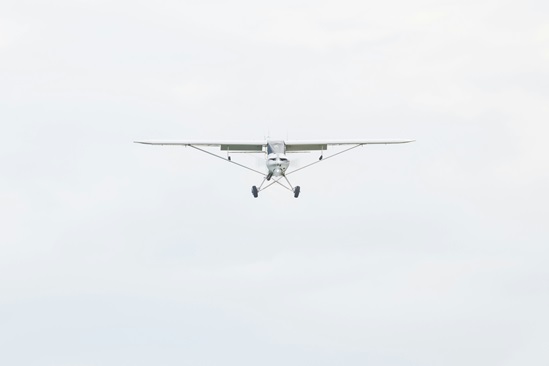ASF offers airport diagrams online as new tool to help reduce runway incursions
ASF offers airport diagrams online as new tool to help reduce runway incursions
The AOPA Air Safety Foundation has rolled out an innovative new tool to help reduce the growing problem of general aviation and air carrier runway incursions. Working in conjunction with NOAA (responsible for aviation charting) and the FAA's Runway Safety Program Office, ASF is now offering free, detailed airport taxi diagrams to all pilots via AOPA Online.
Taxi diagrams for more than 330 of the nation's busiest towered airports went "online" February 24. More will be added within the next six months.
"One of the most common reasons for a 'surface deviation' is that the pilot was unfamiliar with the airport," said Bruce Landsberg, ASF executive director. "A clear map of an airport's runways and taxiways can go a long way toward reducing runway incursions."
ASF has long advocated making runway and taxiway diagrams readily available to all pilots. Previously, pilots had to purchase airport diagrams (which are included with instrument approach charts). That costs at least $30 per year for the smallest coverage area.
Now airport diagrams are available at no cost to any pilot with a computer and an Internet connection.
Working with NOAA and the FAA, ASF obtained high-quality 600-dpi digitized scans of the airport diagrams published in the NOS Terminal Procedures Publication ("approach charts") used by instrument pilots. These diagrams show a complete detail of the airport surface, including the names of all taxiways. The data is updated every 56 days.
The diagrams are converted to the Adobe Acrobat PDF format, which can be viewed and printed by almost any computer connected to the Internet. (A free copy of the Adobe Reader is available online.)
Any pilot, whether an AOPA member or not, can obtain airport diagrams during preflight planning by visiting the Web site. A pilot can find the appropriate diagram simply by typing in the airport identifier, airport name, or the name of the city.
The detailed airport diagrams are also included in AOPA's Airport Directory Online. Pilots using AOPA's Online Flight Planning Service will find links to the appropriate airports and their diagrams inside their weather briefings and flight plans.
ASF suggests that pilots print out the airport diagrams on 8 1/2 by 11 paper, using the "fit to page" feature of the Adobe Reader. The larger diagram will likely be clearer and easier to read than the diagrams in the NOS instrument approach plates.
"With an airport diagram in hand, a pilot will find taxiing around a large airport much less confusing," said Landsberg. "A clear map enhances positional awareness and reduces the chance of a surface deviation."
Runway incursions are a primary target on the FAA's radarscope. Despite renewed attention to the problem, the incursion rate has not declined.
An ASF analysis of all pilot surface deviations showed that entering a runway or taxiway without a clearance accounts for almost two thirds of all deviations. Most deviations happen during the day with flights operating under VFR rules.
General aviation accounts for almost 69 percent of all surface deviations. However, runway incursions that have led to accidents or "close calls" more often happen at night or during instrument meteorological conditions, and are more likely to involve air carrier aircraft.
Most (56 percent) GA surface deviations involve single-engine aircraft. The majority of pilots causing incursions are students, private pilots, and flight instructors. Almost one quarter of pilots involved have less than 300 hours flight time.
"The Air Safety Foundation has established a major educational effort to reduce surface deviations," said Landsberg. "As part of this, airport diagrams online will give pilots a tool they need to fly informed."
Additional information on runway incursions can be found in ASF's Operations at Towered Airports Safety Advisor publication or from the FAA's Runway Safety Program Office.
Chartered in 1950 by the Aircraft Owners and Pilots Association, the Air Safety Foundation is the largest private, nonprofit organization in the United States dedicated to general aviation safety research, continuing pilot education, and training.
ASF's free continuing pilot education seminars alone reached more than 33,000 pilots nationwide in 1999. The foundation is funded largely by tax-deductible contributions from individual pilots.
00-1-024
February 25, 2000


